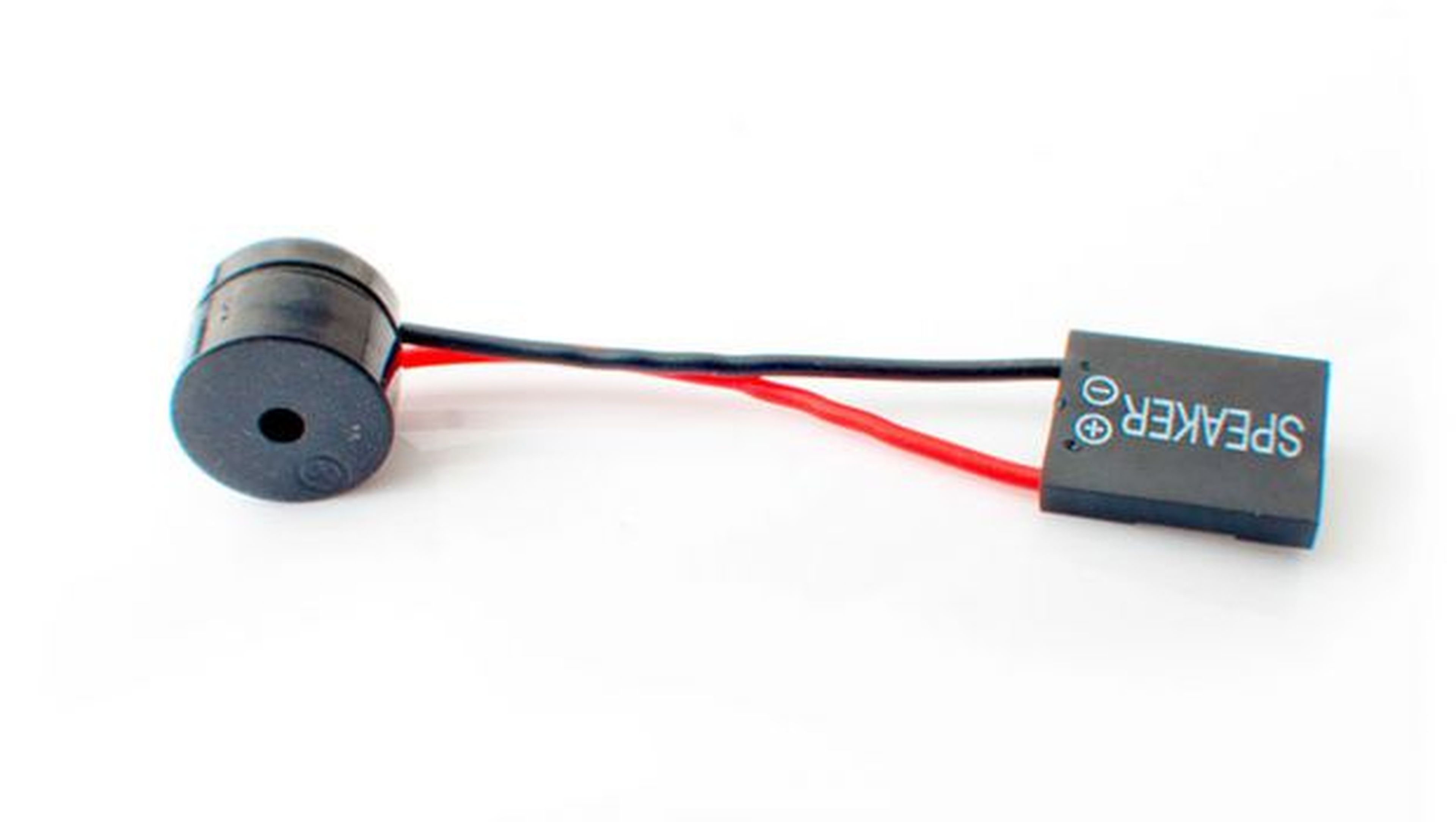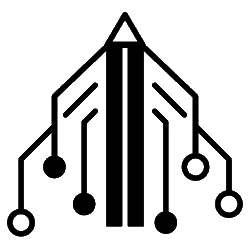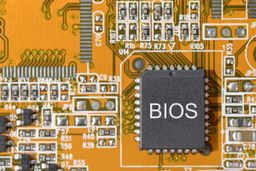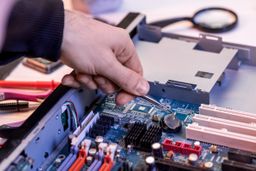Update: In addition to making the structure easier to read, we have added more noise that can also be a computer problem. That is, those that we perceive through a speaker or headphones also allow us to identify the failure.
A computer doesn’t have to be noisy and in fact, if it is, it can cause additional fatigue to its user, since it is not pleasant to have a constant hum, beep or noise for hours on end.
But the sounds that your computer emits They are not always negative. In the same way that a doctor listens to his patients, you can detect certain problems and anticipate them by listening carefully to the sounds your computer makes when booting or while it is running with different workloads.
have you heard the beeps that occur when your computer starts? Do you know what they mean? While you are playing do you hear some strange buzzing inside your PC?
Next, we reveal what is hidden behind those sounds and we give you the keys to anticipate future problems that could have dire consequences for your computer and even data loss.
How to identify a failure by PC sounds:
fans too loud
If the refrigeration systems sounds like your computer is going to take off at any moment, it is most likely that something is not working as it should.
This excessive noise on a PC It can be due to two main causes: the first one is directly related to the wear of the fan itself, whose bearings have suffered natural wear that occurs due to time of use.
In this case, the best option is to replace the affected fan with another of the same dimensions and characteristics, taking into account when installing them that these fans have an air inlet and outlet direction.
Commonly, this direction is indicated on one of the sides of the fans, so you should take it into account and pay attention to the direction in which the previous fan is installed so as not to install the new fan backwards.
On the other hand, the motherboard is in charge of monitor processor temperature and, depending on it, it makes the fan that cools it work at a higher or lower speed.
If shortly after turning on your computer you notice that the fan sounds very revved up, it is most likely because the processor heatsink is very dirty and the fan is not able to cool it properly, so the motherboard forces it to work to the maximum of its possibilities. to keep the temperature at safe levels.
In that case, you can use a can of compressed air for cleaning, which you will find in electronics stores, to thoroughly clean the dust from the processor heatsink, or if you feel capable, disassemble the heatsink to clean it more comfortably, cleaning and renewing the thermal paste that you must apply between the processor and the heatsink before reinstalling it.
Exactly the same thing can happen to the system of cooling your graphics cardmaking your fans sound like turbines.
In this way, the noise of your computer will be substantially reduced, at the same time that you manage to keep the temperatures of your equipment under control.
The motherboard speaks to you
You may not know it, but your computer’s motherboard has a sound pattern that allows identify a problem even before you open your computer case to see inside.
When you turn on your computer, do you hear a short beep before starting the operating system? Well, that beep is the means that the motherboard of your computer has to tell you that everything is in order and the system is going to start.
Many motherboards do not have a built-in speaker, so in order to hear the beeps that indicate problems the motherboard may detect, you will need to install one.
This small device usually comes as an accessory on motherboards or computer cases, and plugs directly into the motherboard.

Once connected, the motherboard is capable of emitting a series of beeps that respond to a certain pattern of failures.
Most motherboards share the same error warning audible pattern, which is usually something like what we detail below.
However, some BIOS (or UEFI) manufacturers use their own system of beep codes, so if you hear any unusual sounds when starting your computer, it is best to check the manual of your motherboard or computer or look for information. on the Internet about the warnings issued by the model of your motherboard.
These are some of the most common audible warnings:
- no beep: If you do not hear any beeps when you start your PC, it may be due to several reasons, including the motherboard speaker not being connected properly or not working as it should. On some motherboards this simply means that everything is OK, so there is no reason to report anything. It is also possible that there is no power supply to the motherboard, so the computer could not start.
- one short beep: As a general rule, this short beep is usually the indication that the board has not found any error and therefore it is going to start booting the operating system.
- continuous beep: This sound is usually produced when the motherboard detects that it is receiving an inadequate power supply, which is usually directly related to the power supply, or to some of the power phases on the board.
- Continuous short beeps: This sound indicates that the motherboard itself has detected a failure on the motherboard, which is probably defective.
- long beep: It usually indicates some type of error related to the RAM memory modules, either because it is defective or because it is correctly installed.
- long and short beep: This sound indicates a possible error in the BIOS coding, or that it has been corrupted, preventing its correct operation.
- Long and two short beeps: Indicates a graphics card failure, which may indicate that the graphics card is not responding or that the port to which it is connected is not detecting it correctly.
- three short beeps: This type of warning is also related to RAM memory, although in this case it indicates that there is an error in the first 64 Kb of RAM memory.
- four short beeps: Indicates that an error has been detected in the board clock.
- Five short beeps: This notice indicates that the processor or graphics card is blocked and does not accept commands from the motherboard, so it may present malfunctions.
- six short beeps: This audible warning indicates an error in the connected keyboard, either because it is defective or because the connector is not capable of detecting it.
High-end motherboards have replaced these audible signals with a small display that shows a certain code and some LED lights.
With this they will indicate the status of the board and the components connected to it.
Magnetic hard drives generate a very characteristic noise while they are working. Although some models are noisier than others, if the sound that your hard drive emits differs from that characteristic “gurgling” so characteristic of hard drives, it is probably because something is not working correctly inside.
Magnetic hard drives have several moving parts that are susceptible to wear, and this wear can manifest itself in the form of strange noises and banging before that part of the drive eventually stops working for good.
If you hard drive starts to make strange noises or knocks when workingit is probably announcing its premature death, so you should try to immediately save all your data, as well as stop using that component for tasks that require some reliability.
That drive may fail in a matter of years or not make it to the end of the day, but what is certain is that since it probably already suffers from a mechanical problem, when it fails, data recovery can only be done from scratch. a data recovery laboratory, the cost of which will be beyond the reach of many pockets.
electrical noise
Although, technically speaking, the electrical noise It has nothing to do with sound, the use of this concept to describe the hum that occurs in certain electronic circuits has become popular.
There is a phenomenon that can occur inside the components of many computers, in which components that do not have moving parts suddenly begin to emit annoying buzzes and chirps.
This sound is usually located in the capacitors and coils integrated in the electronic circuits of the components and is the result of the so-called reverse piezoelectric effect which is nothing more than a mechanical vibration in the crystals that form the capacitor, when it is subjected to electrical stress.
These vibrations produce high-frequency pressure waves that our ears interpret as buzzing or ringing, depending on the intensity.
These electrical noises usually occur in the power supply systems of the components, although the components most prone to suffer them, such as power supplies, tend to use special resins to isolate the coils and avoid these vibrations as much as possible.
This type of noise can appear when the components are subjected to a certain workload, so it is possible that they only appear when you run a video game that demands the maximum from the graphics card or when you start a demanding program for the computer.
This electrical noise is not exempt from a certain aura of mystery since it is not a symptom that affects a single component, but a certain motherboard or graphics card installed with a certain power supply may produce this type of electrical noise. always, whereas if they are installed with other different components, they may never occur.
Although it is difficult to guess what specific combination of components will not generate this type of electrical sound, there are a series of circuitry elements that are less prone to it, so if you take them into account when choosing the components of your PC, it is very likely that you will never listen to them.
Choosing components for your PC that contain quality solid-state capacitors and properly encapsulated and insulated ferrite coils are almost a guarantee to avoid this type of noise in your equipment.
This will not require a lot of effort, since manufacturers strive to emphasize that their components are of the best quality and, therefore, they emphasize that they include this type of capacitors and coils.
The electrical noise is of no greater consequence than the annoyance of constantly hearing a buzz or beep next to you, but this fact alone can make you lose your nerves if you are going to spend some time with your computer next to you.
Noise in headphones or speakers
We may not be talking about the computer exactly, but it is a very important part of it and that is why we have placed it on this list.
Probably interference noise is heard in the speakerssomething that can be due to several reasons, so the first thing would be to know which of all of them it is.
We can connect those same headphones or speakers to another device to verify that it still has that noise. If it continues to be heard, the problem comes from the speakers themselves, but if not, then the problem is with the computer.

If we have wired headphones or speakers, it is best to connect them little by little and see if the noise that is bothering us returns. If so, then you should switch wire to connect them.
When the problem comes from the computer and not from the accessory, it could be due to the sound card. If it’s not integrated, it could be fixed by changing it, but if it is then you could buy a new one. To make sure of this, you should try connecting other speakers.




